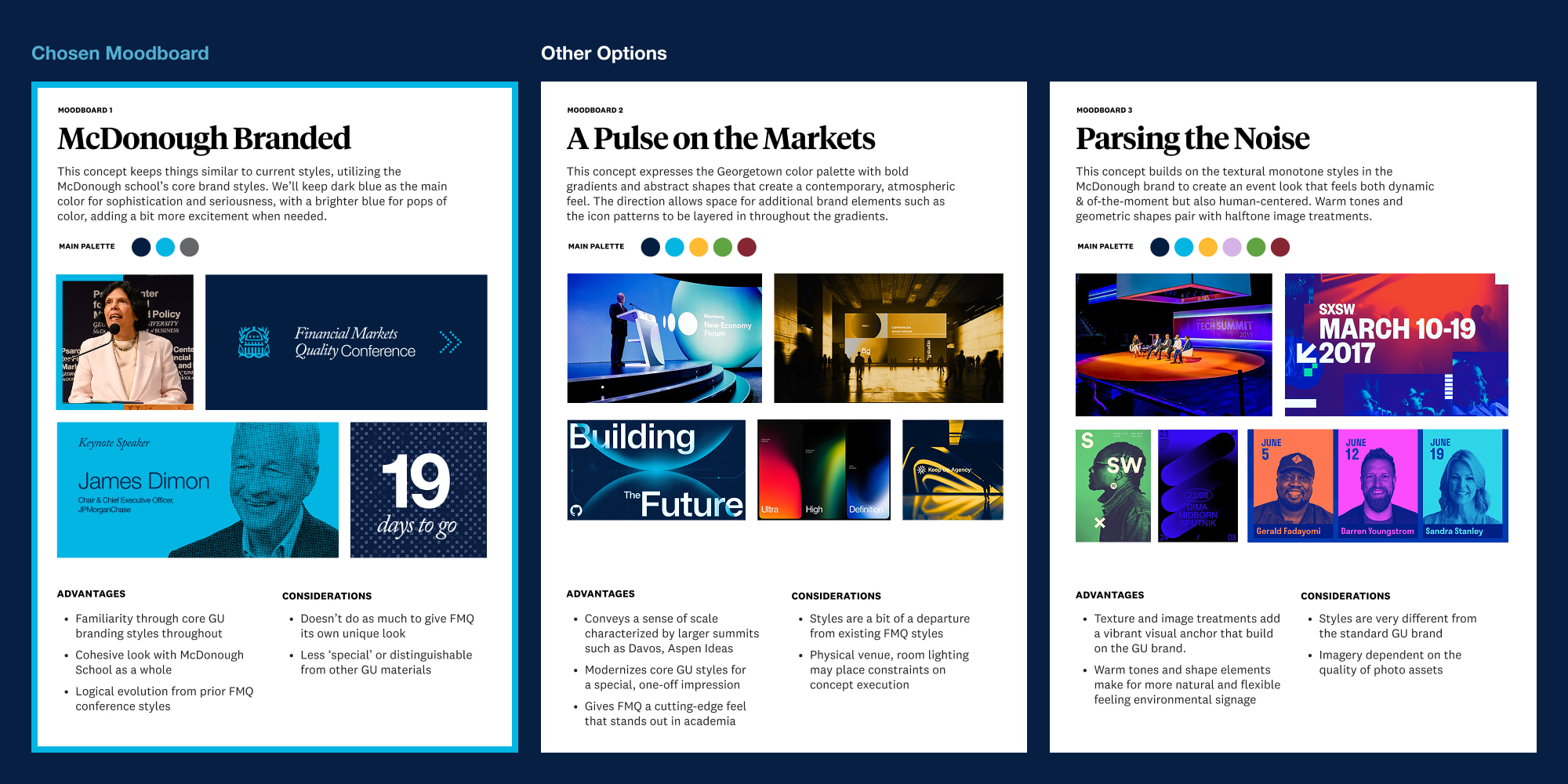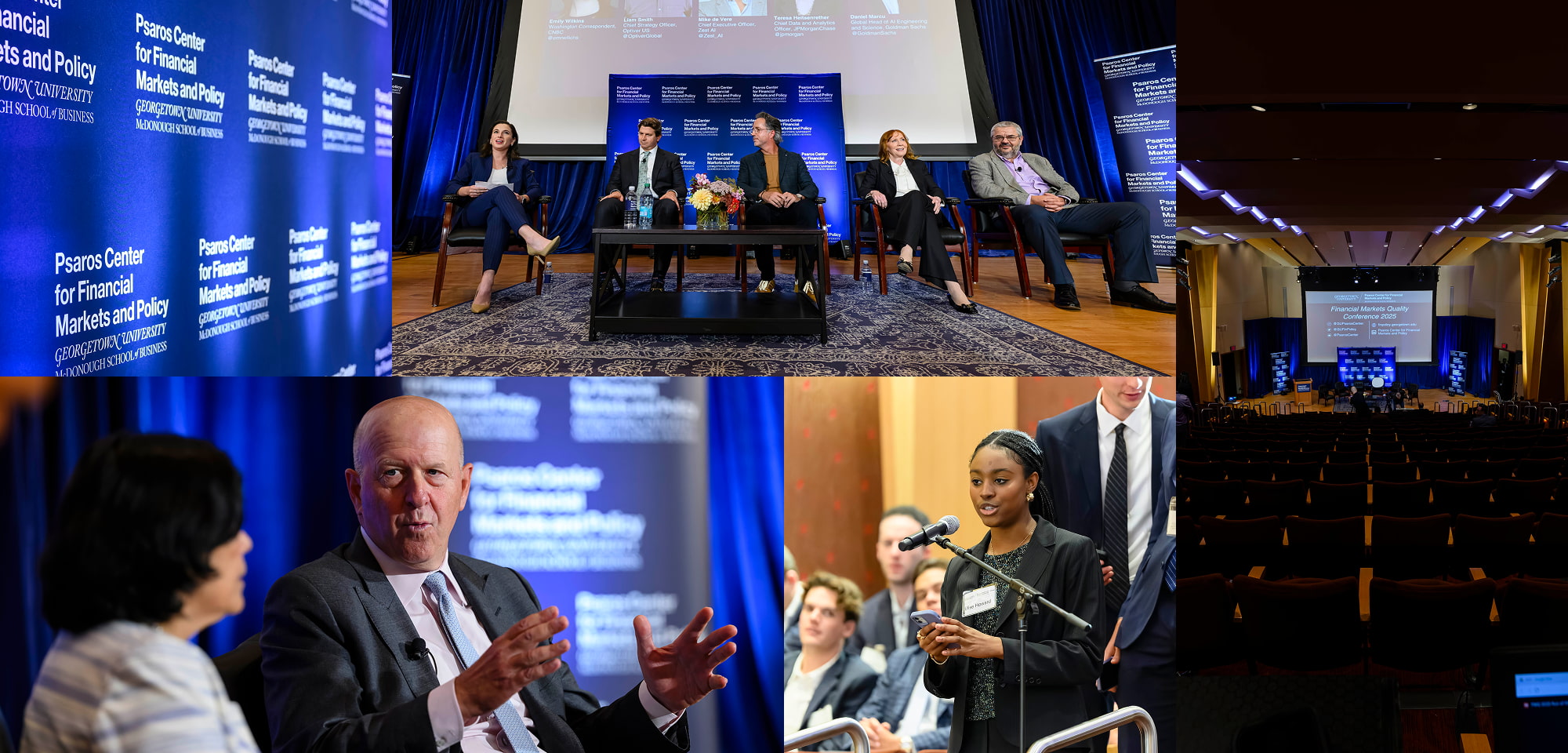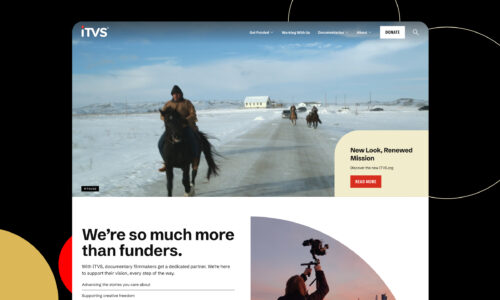400+ event attendees
2,015 total event registrant
~$21.75 CPA for Google Search per registration
53% conversion rate via email campaigns
Expanding Our Partnership
After a successful website redesign partnership in 2024, the Georgetown Psaros Center engaged Teal to be its advertising and brand partner for the FMQ Conference—its flagship event.
The resulting identity was deployed across the full ecosystem: website and registration, paid and organic social, email, livestream graphics, press kits, on-site stage design, and wayfinding—supported by a six-figure, multi-channel ad program that drove registrations and visibility.

Creating a Standout Brand for FMQ
We developed the FMQ brand through a fast, co-branded process that honored Georgetown’s standards while creating a distinctive event identity. Starting with stakeholder interviews and a visual/competitive audit, we aligned on the theme lens—“where markets, policy, and real-world outcomes meet”—then translated it into a modular system: an FMQ wordmark with annual badge, a Georgetown Blue–led palette with a single energetic accent for data and CTAs, and a serif–grotesk type pair tuned for slides, web, and broadcast.
We established a disciplined grid and subtle data-motion motif, documented accessibility (4.5:1 contrast, alt text, caption-ready layouts), and stress-tested the system across digital (site, registration, email, social, livestream lower-thirds) and the event environment (stage, lectern, signage, credentials). Packaging the final assets for implementation across channels…

Turning Interest into Registrations
We built the FMQ media plan backwards from the outcome—registrations—then laddered awareness and consideration to support it. With a six-month runway and a $300K budget, we modeled a full-funnel mix that could scale over time: high-reach channels to seed the market (premium email/newsletters and targeted display), credibility placements for our audience (Politico, WSJ, WaPo), and performance channels to convert interest (LinkedIn, retargeting, and search).
We phased investment to match the decision journey: April–June for broad awareness (display, native, newsletters), July–August to deepen engagement (speaker-led creatives, heavier social and e-newsletters, retargeting on StackAdapt), and a September conversion sprint (LinkedIn Sponsored Posts, Politico/WSJ, and scaled retargeting).
Creative choices were grounded in performance data—speaker-forward assets outpaced all other formats, so we limited frames to 1–2 speakers, tightened CTAs through A/B tests, and used early awareness to build a larger retargeting pool for late-summer and event-month conversion. Along the way, we trimmed underperformers , doubled down on winners , and shifted budget to retargeting where CTR and conversion rates were strongest.

The result was a disciplined, data-led plan that kept the brand visible in the right rooms, captured intent at the moment of interest, and converted efficiently in the final weeks leading to FMQ.
The campaign did exactly what we designed it to do—fill the funnel early, then convert hard.
End to end, the full flight confirmed the strategy. Search was the workhorse—nearly half of registrations came via organic search, with Google Ads converting at an adjusted ~$21.75 CPA and reaching new audiences on unbranded terms (“finance conference,” “financial market events”). LinkedIn was our top paid social converter by volume, while programmatic display played the influence role we intended—touching roughly half of all registrants somewhere along their journey despite modest last-click credit. Email crushed with a ~53% registration conversion rate, validating the content cadence and timing as we neared event month.




